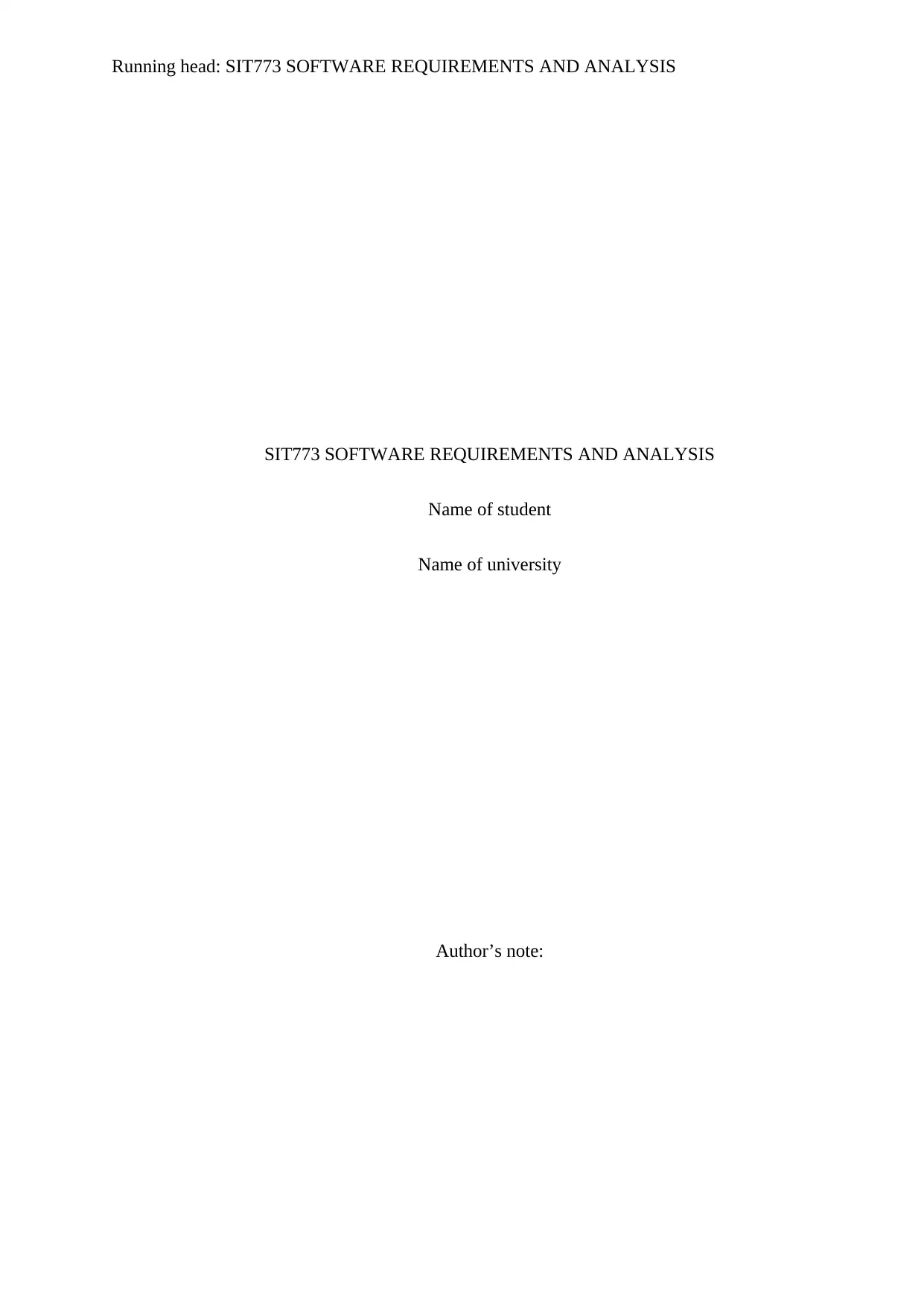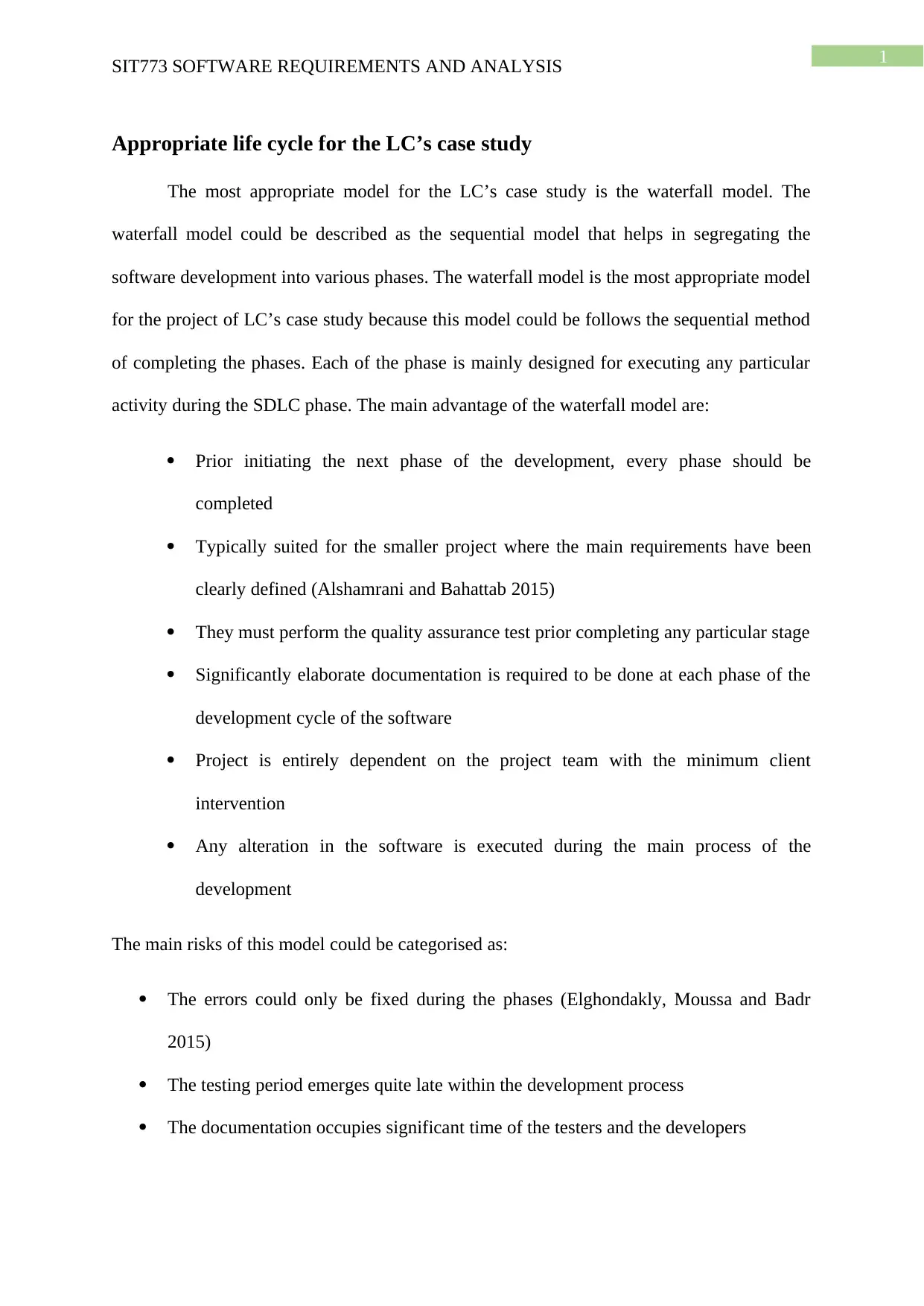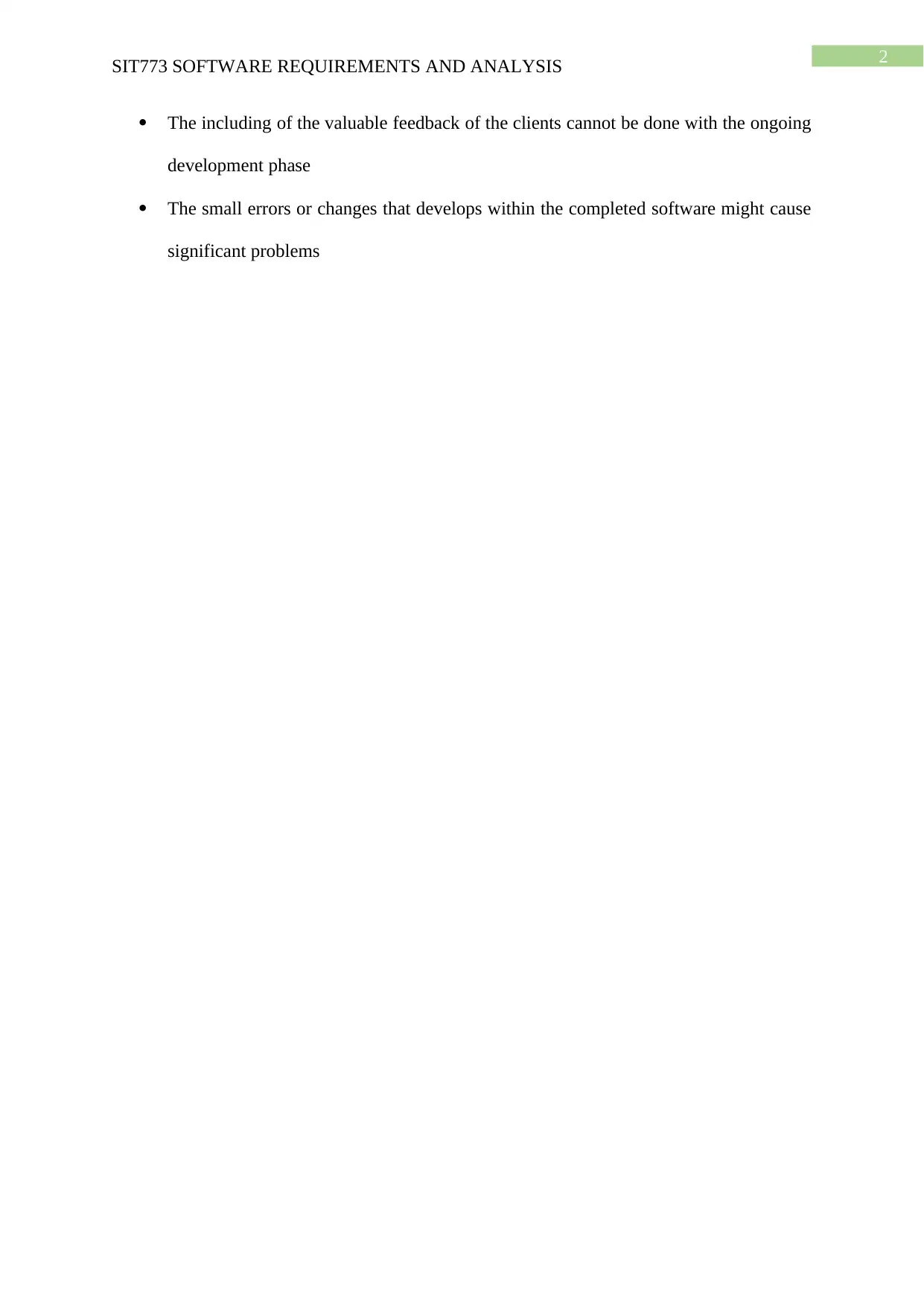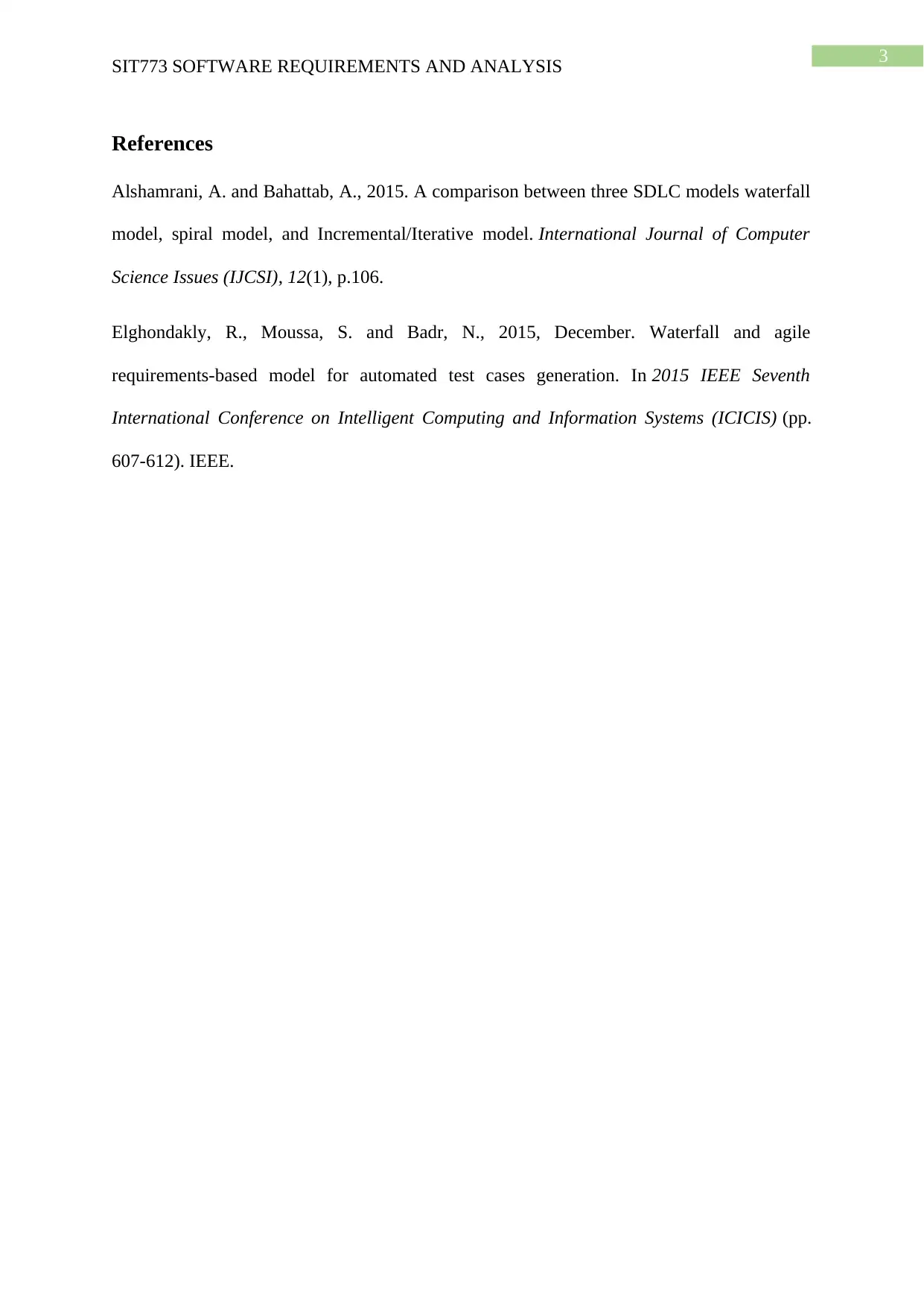SIT773: Software Requirements and Analysis - Life Cycle Case Study
VerifiedAdded on 2022/12/23
|4
|424
|9
Report
AI Summary
This report focuses on the selection of an appropriate software development life cycle (SDLC) model for the SIT773 Software Requirements and Analysis course, specifically addressing the Leckie’s Choice (LC) case study. The assignment highlights the waterfall model as the most suitable approach due to its sequential nature, which aligns with the case study's requirements and the need to integrate various departments like sales, inventory, marketing, and supply. The report explains the advantages of the waterfall model, such as its structured approach and suitability for projects with clearly defined requirements, while also acknowledging its limitations, including the potential for errors to be fixed only during specific phases and the challenges in incorporating client feedback during the development process. The report also acknowledges the importance of quality assurance and the challenges associated with software changes during the development cycle. The report references Alshamrani and Bahattab (2015) and Elghondakly, Moussa and Badr (2015) to support its analysis. The report concludes by emphasizing the practical aspects of the waterfall model in this context.
1 out of 4











![[object Object]](/_next/static/media/star-bottom.7253800d.svg)